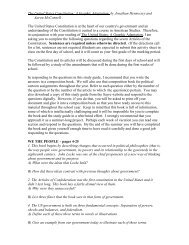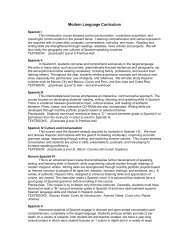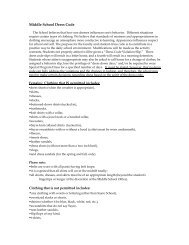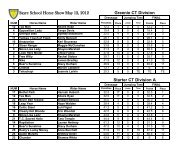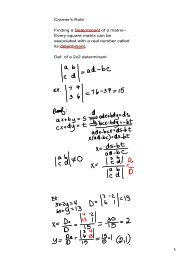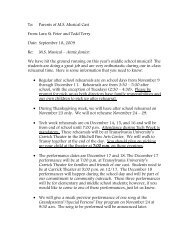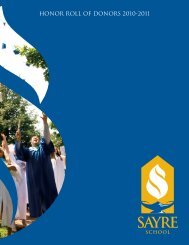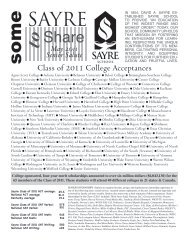Lower School - Sayre School
Lower School - Sayre School
Lower School - Sayre School
You also want an ePaper? Increase the reach of your titles
YUMPU automatically turns print PDFs into web optimized ePapers that Google loves.
HISTORY OF SAYRE SCHOOL<br />
David Austin <strong>Sayre</strong>, a man of humble origin who received most of his education by hard<br />
work and experience rather than by formal education, founded <strong>Sayre</strong> <strong>School</strong>. David <strong>Sayre</strong><br />
was born on March 12, 1793, near Madison, New Jersey, and was apprenticed as a youth<br />
to a silversmith. In 1811, <strong>Sayre</strong> left his home traveling west to Lexington in pursuit of his<br />
trade. Within a short time, he became his own master and eventually expanded into<br />
banking where he accumulated a large fortune. During the course of his life, and with the<br />
counsel of his wife, Abby, he donated a large portion of his wealth to the Presbyterian<br />
Church and to numerous local charities. In 1854, convinced of the need for female<br />
education, he founded a school for girls located on the corner of Mill and Church<br />
Streets. The school proved to be highly successful and within a year outgrew its original<br />
location. As a result, in 1856, Mr. <strong>Sayre</strong> purchased a five-acre tract on Limestone Street<br />
(Johnson’s Grove) and the school moved to its present location.<br />
Since 1856, the school has continued to grow and expand despite periods of crisis - most<br />
notably during the American Civil War and the late 1940s. In 1876, boys were admitted to<br />
the Primary Department and the school established the first kindergarten program in the<br />
state. For a short time, the school became a junior college granting a two-year degree<br />
(1908-1922) along with a regular high school diploma. The college was discontinued in<br />
1922 and in 1947, due to declining enrollment; the school closed the high school.<br />
In 1961, the Board of Trustees believing in Lexington’s need for a co-educational, college<br />
preparatory school began a campaign to renovate and expand the campus. By 1963, the<br />
C.V. Whitney Gymnasium (renovated in 2000) and the Headley-de Waal (renovated in<br />
2002) buildings had been constructed, and in 1965 the first high school class of the “New<br />
Era” graduated. Further additions to the campus include the Marie Louise Whitney <strong>Lower</strong><br />
<strong>School</strong> Building (1971), the Edward F. Simms Library (1973), the Johnson-McCoy<br />
Building (1980), the Violet Milton Price Combs Garden (1980), the Field Oldham<br />
Playground (1984 and renovated in 1998), the Edith A. Whitaker Fine Arts Center (1987),<br />
the Parker House (2000), and the Buttery (2001). A technology center (1996) occupies<br />
part of the library, and a wireless, state-of-the-art Upper <strong>School</strong> was opened in January<br />
2003. Since the first graduating class of the “New Era” in 1965, the school has graduated<br />
over 1,500 young men and women. Now in the Twenty-first Century, the school<br />
continues to expand its campus, its enrollment, and its progressive curriculum fulfilling<br />
its founder’s dream.<br />
3



